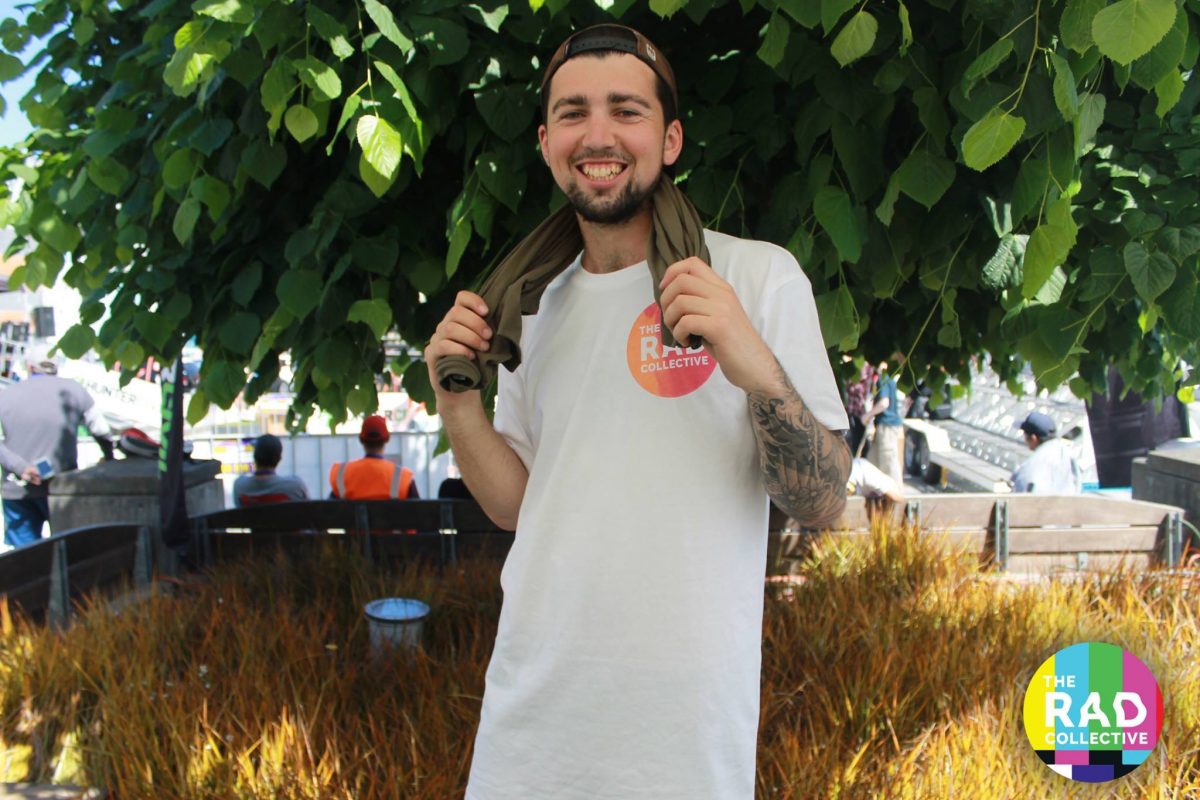A Tribe Called Haz, the pseudo identity of Harry King, a young artist and member of the RAD Collective, is in many ways indicative of the alternative and do-it-yourself approach of a number of Christchurch’s young, urban creatives. A Tribe Called Haz’s twisted, low-brow imagery and raw, low-fi style is reflective of an outsider style; his background as a skater and graffiti writer more important than any arts training. His strange, playful compositions and juxtapositions, collating his various influences, experiences and even momentary preoccupations, are wrapped in a subversive and often anarchic energy, full of bright, at times acidic colours, applied in swarming washes of acrylic paint. While his work is very much of the digital and internet age, it is also refreshingly hand-made, imperfect and intentionally unpolished. His work may not be pretty, but it is playful and punkish, reflecting his sense of humour and a desire to confront and unsettle unsuspecting viewers; to garner a reaction, good or bad, challenging the viewer’s ability to be in on the joke. After following A Tribe Called Haz on Instagram for many months, I was glad to get a chance to sit down with him and find out more about his work, how various influences inform what he does, and what impact being a part of the RAD Collective, and social media, has had on getting his work out there…
So, should I call you A Tribe Called Haz? It’s one of the longer monikers I’ve come across, but I feel like it should be used in its totality! (Laughs)
Yeah that’s all good! (Laughs)
I was recently talking to Becca Barclay, one of the co-founders of the RAD Collective, and she said that the running joke is to describe you painting in head to toe black denim, drinking a dozen Diesel bourbon and cola cans, listening to Bon Scott era AC/DC (which in my mind is being played from the radio of a mid-eighties Ford Cortina). While she admitted it is more a joke about stereotypes, would you say it is a fair description?
Ahh, it is about eighty percent true! (Laughs) Yeah, I do love a bit of black denim and you can’t go past Bon Scott, but I don’t really paint so much under the influence, even though that was tied into the last exhibition name. But yeah, it is mainly just me painting in the garage, so it does seem to fit!
But, of course you are made up of more diverse elements than denim and classic rock; you’ve been a skateboarder since you were young…
Yeah, I started skateboarding about 11 years ago.
And you have a background in graffiti as well…
Yeah, that came about through skateboarding as well.
You also work as a builder, right?
I’m a third-year apprentice builder…
So, amongst all those influences, have you had any ‘traditional’ training, or are you self-taught as an artist?
I did art at high school, so I think the highest I’ve been trained would be level two at high school. But I hated doing art at high school. I didn’t like being told what to do, or how to do it, you know, I feel like it is stuff you can pick up by yourself. I don’t really see the benefit in that type of thing. I think it is good that they teach art at high school, but I think it should be kind of like a free period, where you can experiment more.
So, your experience illustrates how influences like skating and graffiti can be as formative as a formal training, in both technical and conceptual approaches to making art, right?
Yeah, it’s definitely just that I like to follow my own path. I pretty much pull stuff out of thin air, or if I just see stuff that looks somewhat eye-catching, it inspires me to do something. I can’t really put my finger on it, but yeah, it’s a time and place kind of thing, and I kind of think that comes from things like skating and graffiti.
What explicitly do you take from skateboarding? Do you connect skating and making art? Is there a shared spirit between the two for you? Is there something in the physical, practical act of skating that translates, or is there a distinct influence in terms of skateboarding’s visual culture?
For me, skateboarding is just something that is free. There are no rules, no one’s telling you what to do. It’s something that can be taught, but it doesn’t mean you will be good at it. Even if you are taught how to do stuff, everything is different for everyone. But yeah, it’s the sense of freedom, it’s just like a good way to put my mind at peace for a wee bit.
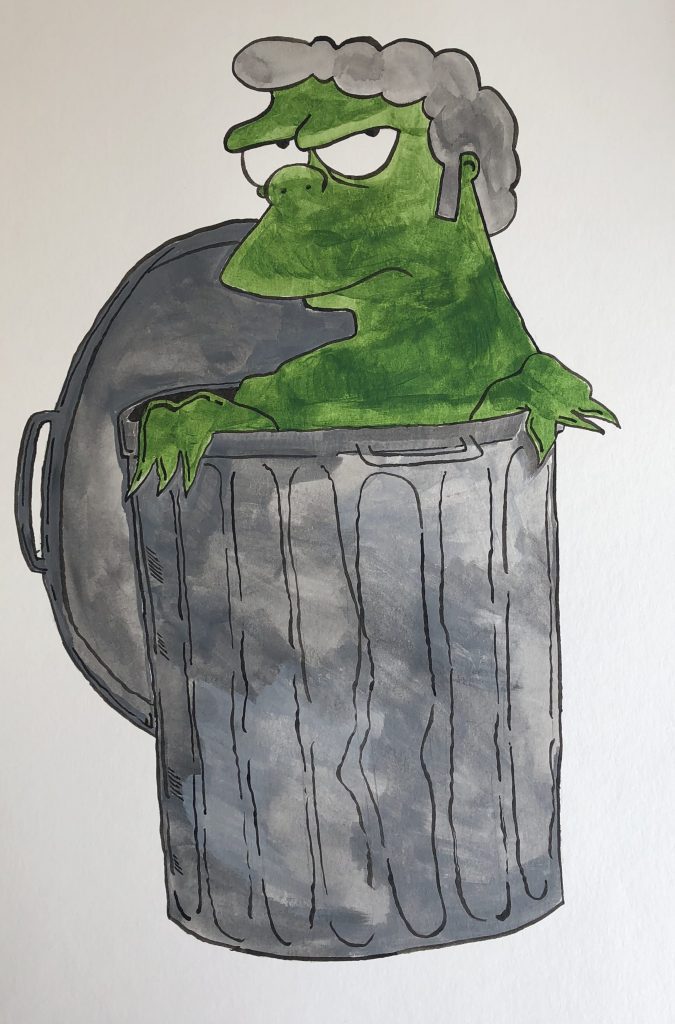
I guess the same could be said for the attraction of graffiti? It’s also about freedom of expression, in both similar and divergent ways. You mentioned that you got into graffiti through skateboarding, so did that mean you came at it with a less traditional approach, more San Francisco than New York? Or were you still drawn to the hip hop tradition of graffiti writing?
Graffiti and skateboarding can go both ways. There’s the punk side, and then there’s the hip hop side, and it all depends on who you are, you know? There are lots of punk skaters out there, and you see the old pentagrams everywhere and the anarchy symbols, that A.C.A.B. kind of stuff (an anarchic acronym for All Cops Are Bastards), and then there’s the hip hop sort of stuff, the bolder letterform-based stuff. In my eyes that’s real graffiti, the hip hop side. So, yeah, I lean towards New York for sure…
Do you think Christchurch has that sort of diversity amongst the local graffiti culture? It definitely seems, outside of some figures, that the hip hop tradition has always been the most prominent.
There is definitely some quirkier stuff out there, but overall the scene is more traditional. So yeah, there is a bit of a gap between the two, people can be set in their ways.
Although there is obviously an inevitable overlap in terms of influence, do you separate your work as A Tribe Called Haz from your graffiti output? Are they ever in conversation stylistically or thematically, or do you keep them distinct?
No, they are two separate things. You see a lot of old school graffiti artists, or graffiti artists in general, go through just being hardcore graffiti writers, and then they get to a point where they start doing exhibitions and they go off in a totally different way, and then everyone who is still about graffiti, who grew up idolising them, they kind of turn on them for doing that, and I think it’s just easier to keep them separate…
It means there’s a fidelity to both as well, you’re not having to worry about those distinctions: one is one, the other is the other. Which means they keep fresh when you jump between them. I guess it also means you can be as experimental as you want to be in each realm, and that each can take really divergent paths.
Yeah, they don’t have to correlate at all, it is kind of like a split personality kind of deal!
How did the name A Tribe Called Haz come about? Is it just a moniker or is it more of a concept?
I’d say it is more of a concept. When I first started out, I called myself Postal Services, it was just something out of the blue, it didn’t need to make sense, I just didn’t want to put my name to what I was doing. That way you can do whatever you want, and I chose Postal Services. I ended up changing to A Tribe Called Haz obviously because of the hip-hop group A Tribe Called Quest, but also, back when I first started skateboarding, there was a guy and his name was A Tribe Called Steve, and I used to see that written everywhere, so I was like, I’ll see what I can do with this and it has just sort of stuck…
So, there is a lineage there, a reference outside of the obvious one that many people probably aren’t picking up on, a little bit a local/subcultural reference…
Yeah, like I never met the guy, but I could’ve been in the same place, who knows? That’s the cool thing about having a separate identity.
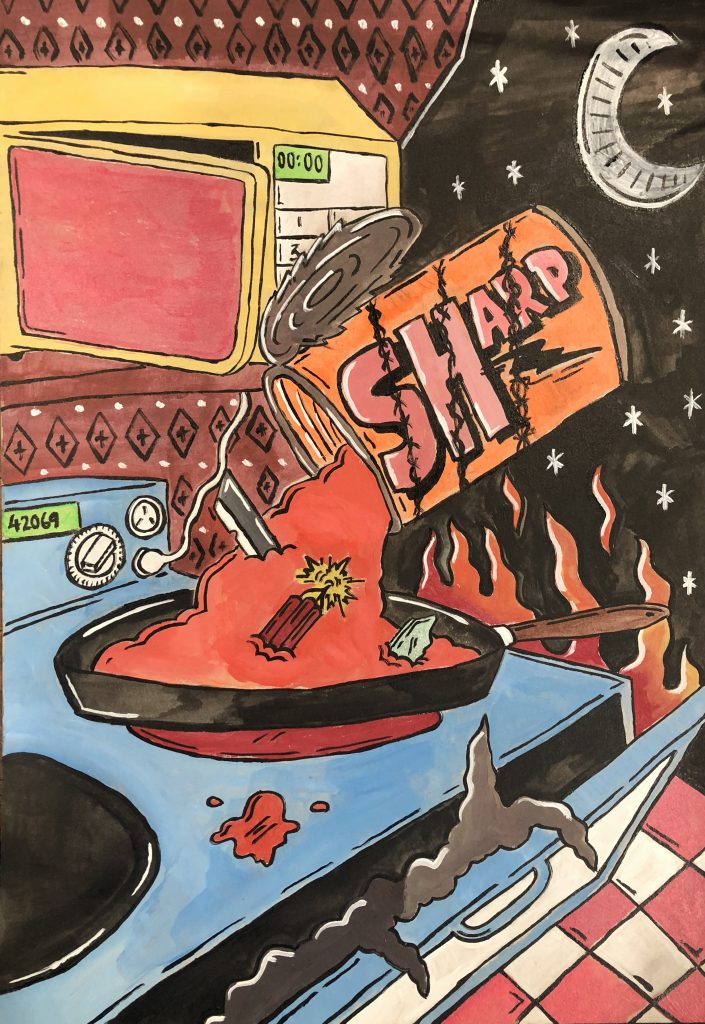
Your work clearly has a sense of humour, it’s often a pretty acerbic humour too. It comes through both in the imagery and in the visual style as well. Stylistically, how did you develop that rough, raw aesthetic? Is it a natural direction for you or have you refined it through exploration? And do you see it as an important part of the sense of humour of your work?
I think with my style and stuff, most of it is just natural. I think it is heavily graffiti influenced, big black outlines of stuff and lots of bright colours. I don’t try and sugar coat anything and visually I just try and make it as simple and as eye-catching as possible. Its not even that I’m trying to make other people laugh necessarily, I guess its kind of selfish in that I’m just painting things that make me laugh.
You mainly paint in acrylic, do the mediums you use play a big part in how you conceive of your work? Do you see a specific difference between using brushes and paint from spray cans?
It’s mainly acrylic. I’ve never touched watercolour. I’d like to branch out a little more. I’ve used a lot of Indian ink and I’ve recently started putting gloss finishes and all that kind of stuff on works as well. Yeah, I’d say the mediums I use are an important part of my work. I like acrylic because it is easy. Pretty much every can of spray paint is acrylic, so it goes hand in hand, it dries quickly, it’s easy to use, all that kind of jazz. I guess I also like acrylic because it doesn’t look like spray paint too.
There is a certain colour quality in your paintings, colours that are quite harsh, and applied in a certain way, quite flat and thick, is that all intentional to create a specific effect?
I like to think of my use of colours and how I put them on paper as kind of bulky, I am trying to make the images quite dense I guess.
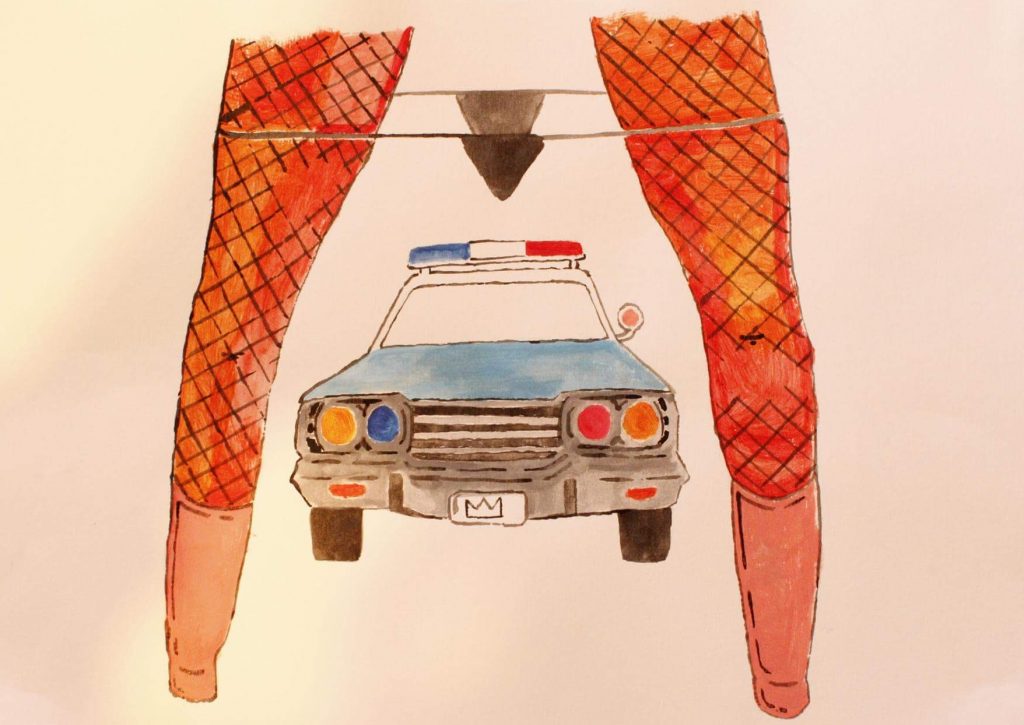
Your images are a real mixture; scenes filled with strange going-ons, juxtaposed objects, pop culture references, phrases, mysterious characters, it seems like anything goes. But there is also a sense that whatever you are depicting, they can seem at once mysterious, obvious and filled with potential narratives that the viewer can unravel. How do you come up with your subject matter?
I like confusing people. I like making people think, and maybe if I can offend people, it would be good as well. I’m not really pushing the envelope at the moment with anything I’m doing, but I like that kind of stuff, I like controversy and really topical stuff. My pictures are just based on whatever comes into my head at the time, so they could be anything really, sometimes from my life, but other times just from crazy thoughts. I often do something and then think, this looks boring, I need to chuck some fun stuff in there, to sort of twist it. So that can make stuff pretty out there…
By working with controversial, confronting or bemusing imagery, are you trying to elicit a response from the viewer? To make them feel a certain way?
Yeah definitely. With controversy and people being offended by what they see, it’s all their choice, it doesn’t have to be what they make it out to be. Everything has got two sides to it, or even a third side coming from someone else’s point of view, nothing is the same to everyone…
If you can offend someone in some way, it also means they at least have to consider why they are offended, right?
Yeah, and maybe they can come around to see it from someone else’s point of view, and be like; actually, it’s not as bad as I think… Or maybe the more they look at it, the more they hate it, which is also fine. I just like getting reactions out of people, whether it is good or bad, you know, it is better than someone just looking at something and having no thought of it whatsoever. I would rather make something that someone looks at it and they might ponder on it, even if it’s in their head for a minute, it is still confronting them.
Does building play any influence in your work? Do you see a connection between the rigorous process of building something and the way you create a painting?
Yeah, well I see everything in layers, like you’ve got all your steps you go through to get a house to where it needs to be, and that’s the same with painting; you do your background, then you put whatever you want on top and then it’s just layering and layering. I think with building, it has made me think about other mediums and stuff, but apart from that I haven’t really taken those ideas too much further…
Have you thought about making three-dimensional work, actually building sculptural objects?
Not really, or at least it’s not on my radar at the moment, although I wouldn’t rule it out. In high school I did sculpture as a subject. I think I was in the last sculpture class that Hagley High ever had. I think I was one of the only students, there were three of us, but I was the only one in my year.
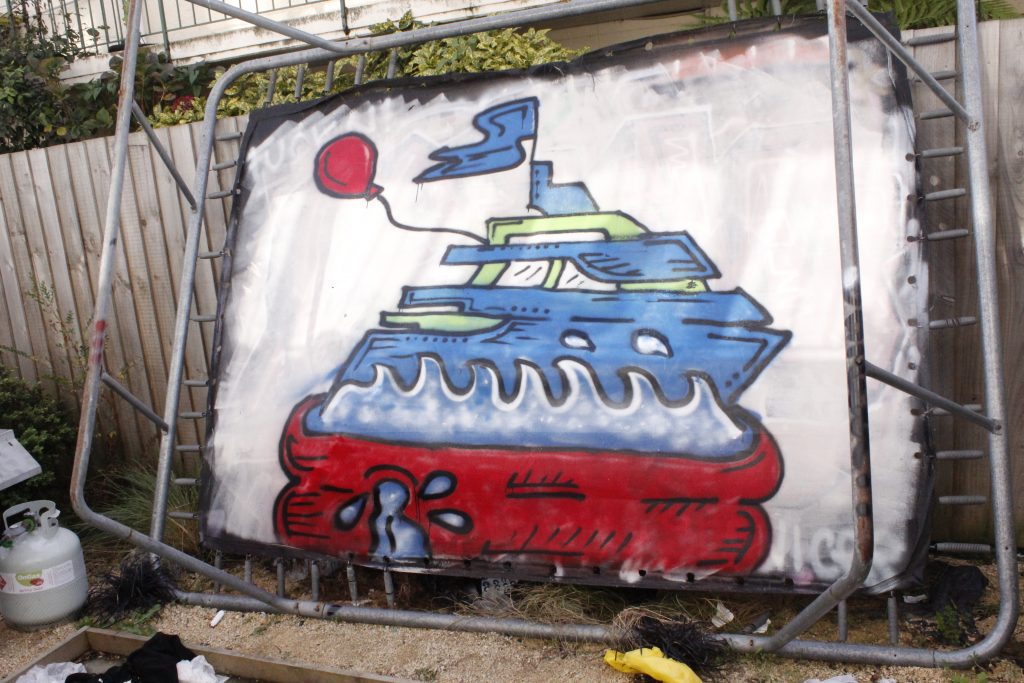
Untitled, Aerosol on a trampoline, 2018
How did you come to be a part of the RAD Collective?
I met Becca Barclay about a year ago. She was really good mates with my neighbour and one night we were having a party and one of my flatmates, knowing she is a graphic designer, was like: ‘Oh, Harry draws…’ She came and looked through some of my blackbooks and was like: ‘This is crazy!’ I didn’t really hear anything for a while and then we ended up hanging out a little bit, and she said: ‘I’ve got this idea, I want to get this collective going, I want to do something in Christchurch.’ Eventually we moved into a flat, and now I live with her and Jimirah, the other co-founder of the RAD.
Without the RAD Collective, what avenues would you have explored for your paintings? Would your work have stayed in the blackbooks, or were you trying to find ways to get your work out there anyway?
I think I would still be floating around not really having any sense of direction. It’s good having something to work for and towards. It gives you fuel for the fire. I’ve had so many opportunities so far because of my involvement in the RAD Collective. I think I’ve featured in three exhibitions. Without the RAD, my work would probably have still been in the blackbooks…
It feels like in post-quake Christchurch young creative people have been somewhat empowered to make things happen, and I feel like the influence of urban art is part of that too, just as a source of inspiration, or an alternative approach. In the past it seemed like a battle to get things off the ground unless you were exposed to the more traditional networks. Now it feels like there’s more willingness for people to come together and put things on, and people who may not have taken that step are now exploring new ways to get their work out there…
Yeah definitely, especially with the RAD, I see it as having kind of a do-it-yourself mentality. If no-one’s going to put your work out there, then you’re going to have to do it yourself. You are going to have to try a lot harder, but I think that as long as you’re doing something, you know, you can’t go wrong. So, yeah, I guess Christchurch does seem to have sparked up a bit more of a start-up attitude and things are happening that might not have happened before.
Has being in the RAD Collective inspired you to explore any new ideas?
Yeah, I’m starting to dabble in digital art, like everyone! At first, I was a little bit dubious about it all being on computer because you don’t get the same feel, you don’t get the same effects, all that kind of stuff, but it’s a lot more accessible. You don’t have to carry around your paint brushes everywhere, you can be sitting on the bus or whatever and just be smashing stuff out. I’ve been trying to get back into photography as well…
I feel like your work would translate well digitally, but photography is an interesting direction, because it feels a little at odds with your visual style. Are there any particular influences or interests there?
It’s a little bit of everything, just day to day life. I like urban nature as well… I guess I’m mostly influenced by skate photographers and people from that scene, like Ed Templeton, and even Moki (another member of the RAD Collective), I really like how raw his photos are.
In many ways we are all photographers now, not only do we all have access to cameras, but because of social media, we are also a lot more aware of how we compose and publish pictures. But a lot of people are embracing traditional elements of photography, inevitably inflected with the social nature of ‘everyday’ photography, but with more awareness of the process. Are you part of the movement to reclaim photography a little?
I wouldn’t say reclaim (laughs), but I do like the old school 35mm, all that sort of stuff. I think the digital side has helped with that change, because even though it’s pushed it out a little bit, it has also sort of brought it back, the digital technology kind of became a gateway back to the traditional stuff. It’s definitely a lot more popular than it was when they started bringing out digital cameras and all that sort of stuff…
Like millions of others, Instagram is a primary way for you to put your work out there online and to gain exposure. Do you feel like your work is able to operate as effectively within that digital realm as it does in an actual physical presence, or do you still make your work for people to see face to face?
Yeah definitely, I wouldn’t say it is made for Instagram, but I will do a painting, take a photo straight away and try and get it up so a lot more people will have access to it, as opposed there just being all these paintings sitting in my garage and I would have to ring people, and be like: ‘Yeah, come round and see what I’ve done…’
Do you ever hesitate before posting something, or are you pretty quick to put stuff online?
Nah, I don’t really edit my output, but I might give it a day or two before posting, so I’m giving different posts a bit of space, a bit of breathing room. I never use filters either, it is always a case of what you see is what you get.
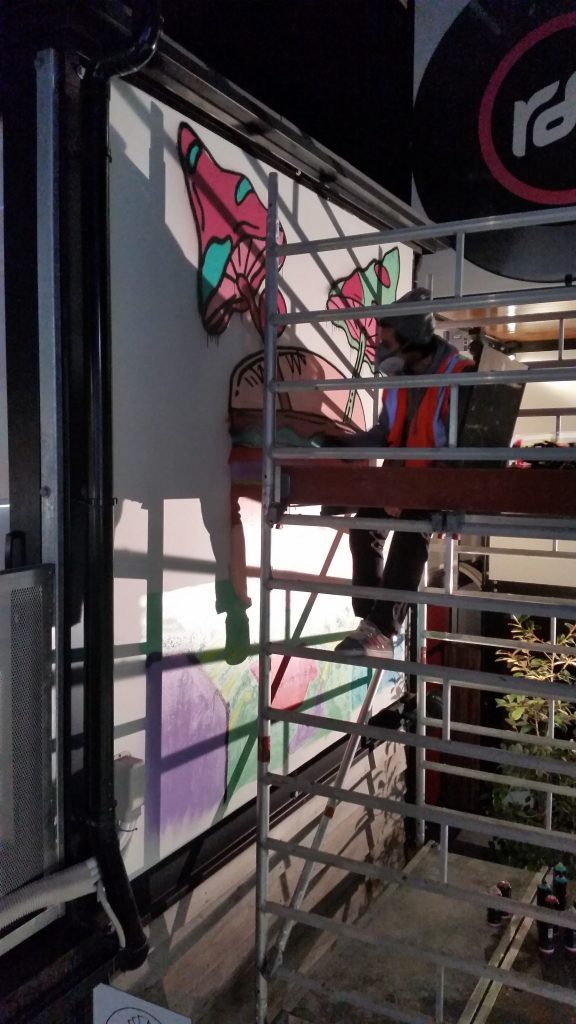
Yeah, I was really nervous, but it did give me a good adrenaline rush for a couple of hours! I ended up listening to Powerglide by Rae Sremmurd and Juicy J on repeat for two and a half hours, that seemed to work…
So, you didn’t listen to Powerage!
Haha, yeah nah, no AC/DC that night. It was a really good turn out to the show though, I think everyone involved was really pleased with the reactions…
What else is on the horizon for A Tribe Called Haz?
My books are open! There is nothing concrete, but definitely more paintings and hopefully more walls. I need to hone the A Tribe Called Haz style for my wall work, but I’m keen to explore that…
Cheers man, keep up the good work…
Thanks very much…
Check out A Tribe Called Haz on Instagram:
Cover image photo credit: The RAD Collective

